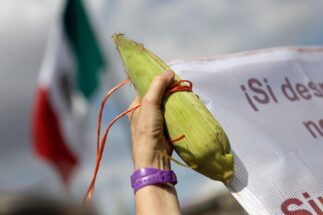When Ecuador’s president Guillermo Lasso visited China for the opening of the Winter Olympics, the head of state used the occasion to discuss debt renegotiations between the two countries, a momentous opportunity for creative approaches to resolving Chinese debt in Latin America.
China has been Ecuador’s largest bilateral creditor for much of the 21st century, since the South American nation was largely cut out of Western sovereign credit markets for several years after its 2008 cancellation of payment on bonds that were found to have been tainted with irregularities. Though Chinese lending has slowed since that time, Ecuador’s latest public debt reports show that it owes China nearly US$5 billion, or about 11% of its total external debt. Only multilateral institutions, like the Inter-American Development Bank and the International Monetary Fund, hold larger shares of the country’s debt.
With Ecuador looking to renegotiate its debt commitments, both sides would be wise to consider biodiversity finance proposals such as debt-for-nature swaps, which aim to see portions of debt cancelled on the condition of funds being allocated for conservation investments. Ecuador boasts one of the world’s richest biodiversity levels but its debt levels leave it tightly constrained in its ability to conserve these resources or develop sustainable uses for them. By exchanging short-term financial commitments for long-term environmental commitments, both Ecuador and China could build the foundation for a more resilient economic relationship moving forward.
Debt-for-nature swaps are based on the shared understanding that repaying debts in full may be impossible during a crisis. Furthermore, single-minded austerity imposed in attempts to meet impossible repayment schedules blocks much-needed conservation action, erodes long-term economic stability and precludes other, more sustainable uses of finite natural resources.
In Ecuador’s case, the petroleum reserves that have long formed the backbone of its economy are expected to run dry within the next few decades. The nation – and the Amazon region where oil is found – must seize the opportunity to begin planning for its next phase. If Ecuador responds to its current debt burden merely by accelerating Amazonian oil extraction (as it currently plans to do through a concession auction in late 2022), it will only create future economic pain once the oil has been depleted.
Similarly, if Ecuador implements austerity, thereby limiting its conservation investments, it will allow the Amazon to be damaged by oil production, threatening ecosystems and biodiversity, and limiting its resilience and potential for more sustainable, post-petroleum uses.
Debt-for-nature swap proposals are an opportunity to turn this moment into the foundation of a future economic relationship
Our recent debt-for-nature proposal takes this post-petroleum vision as its starting point, outlining two potential avenues for action.
One route would allow for an overall decrease in national oil production and aims to cut Ecuadorian deforestation by nearly half in the next decade. Our proposal outlines how this could save approximately 200,000 hectares of Amazon rainforest and avoid as much as 117 million tonnes of carbon dioxide emissions, in exchange for a reduction of US$440 million in Ecuador’s debt to China, or about 10% of what Ecuador currently owes the Asian nation.
A smaller, more targeted avenue for conservation action would repurpose US$19.2 million in Ecuadorian debt obligations to China, in order to support research at the Universidad Regional Amazónica Ikiam, an institute located in the Amazon, and expand the Colonso Chalupas reserve that surrounds it. This university was founded in 2014 with cooperation from a Chinese company, and stands as a symbol of shared commitment to biodiversity conservation, nurturing a special focus on conservation research and action. This proposal would support improvements in university conservation research capabilities and strategic cooperation with Chinese conservation researchers, as well as deepening conservation activities and research in the Colonso Chalupas reserve. Critically, it would also support the development of sustainable livelihoods in collaboration with neighbouring communities, most of whom are Kichwa Indigenous peoples.
The government of Ecuador has shown great interest in pursuing debt-for-nature deals, having proposed them as a way to help fund an expanded marine reserve around the Galápagos Islands announced at the COP26 climate conference in Glasgow last year. It has also previously explored innovative finance for conservation, such as the Yasuní Initiative, which proposed keeping oil in the ground beneath an Amazonian national park in exchange for payments from richer nations. Launched in 2007, the plan was, however, abandoned in 2013 after attracting limited funding, and drilling began in 2016.
But now, unlike previous efforts for biodiversity finance, Ecuador has a partner in China that is willing to consider debt renegotiations and shared conservation goals. Early in the Covid-19 pandemic, China rescheduled nearly US$900 million in Ecuadorian debt payments. Furthermore, China has shown that it wants to take a global leadership role in biodiversity finance: China’s new Kunming Biodiversity Fund – announced as it hosted the COP15 biodiversity conference in October – was established for just this type of opportunity.
Ecuador and China find themselves at a crossroads with much in common, including interests in biodiversity, an understanding of the need for a post-petroleum global economy, and of the shared necessity to renegotiate short-term debt payment obligations. Debt-for-nature swap proposals are an opportunity to turn this moment into the foundation of a future economic relationship built not on petroleum and debilitating debt, but on sustainable uses of renewable natural resources. The time to act on those proposals is now.
This article is republished from Diálogo Chino with minor changes. The original version is available here.








